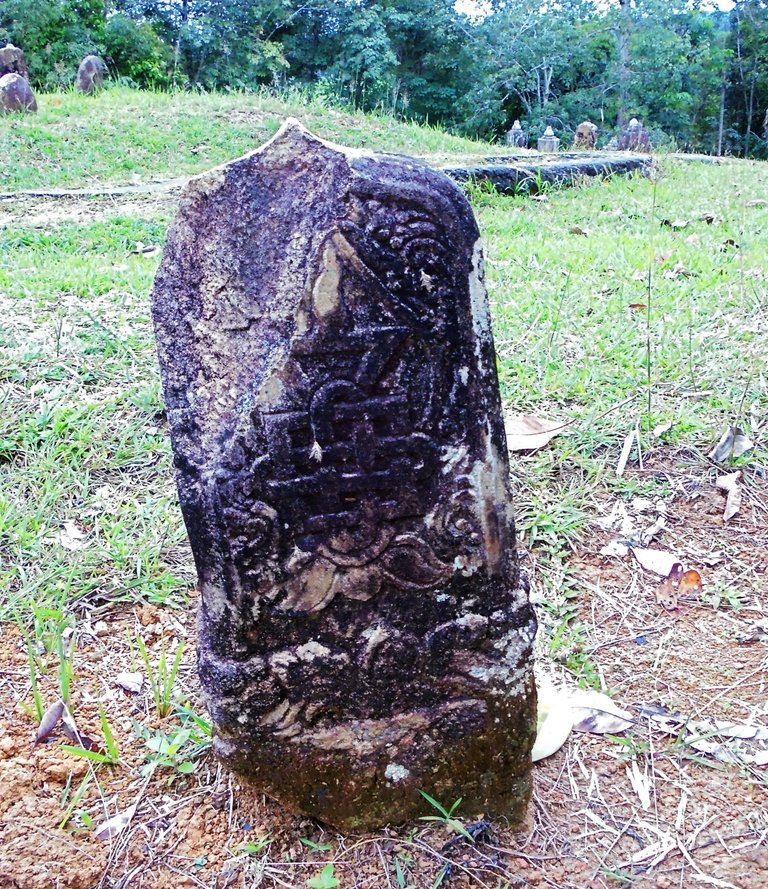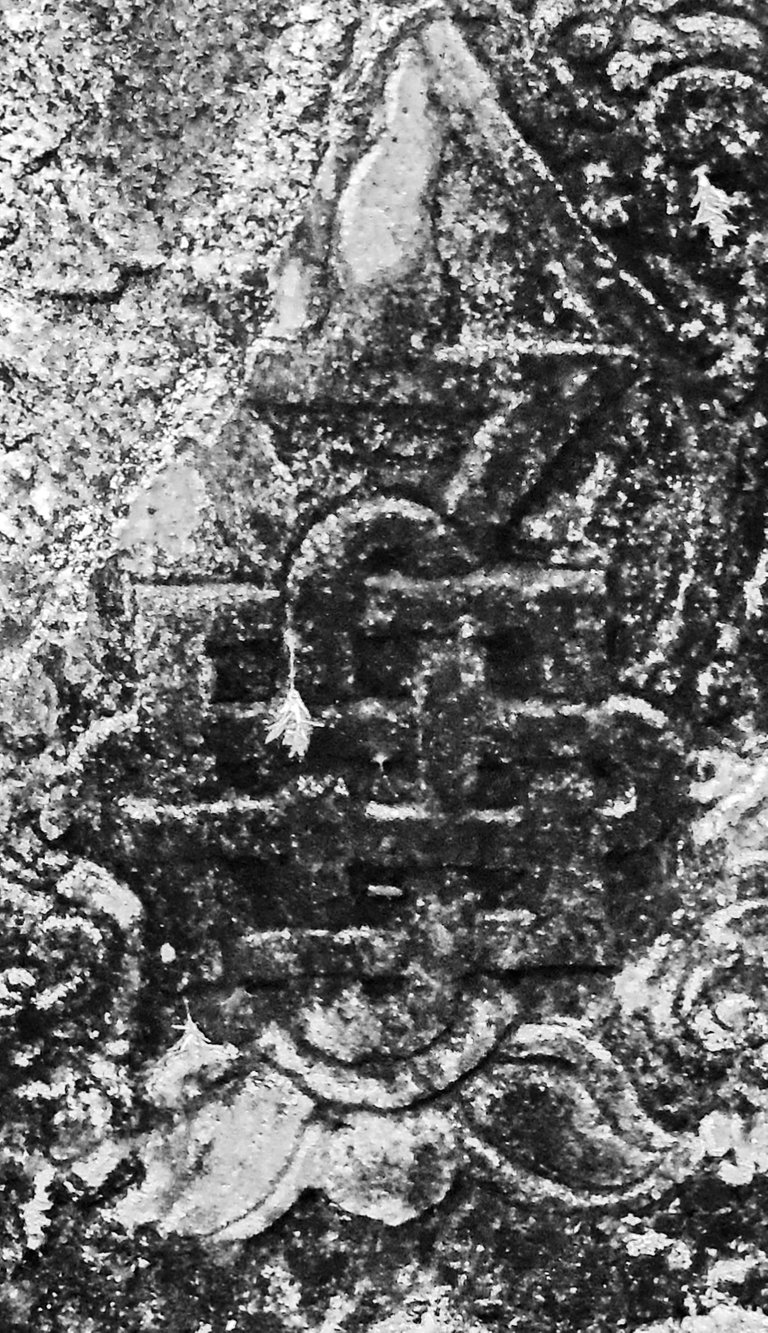Please read Sumatra Archeology - Part I: Barus (1)
Artifact: Tombstone
Site Name: Mahligai Cemetery (Makam Mahligai)
Location: Sihorbo, North Barus, Central Tapanuli Regency, North Sumatra 22564
Comment on this artifact:
With careful observation will be evident on this tombstone an ornate motif known as the Solomon's knot. It is combined with a stylized ornament of a kind of trophy or rather a candlestick. Two ornaments that are essentially different have been united and put together here.
Solomon's knot (Latin: sigillum Salomonis, literally 'Solomon's seal') is the most common name for a traditional decorative motif used since ancient times, and found in many cultures. (1) In fact, it is one of the oldest symbols and is seen even in the stone-age carvings. It is also one of the few symbols that can be found in nearly all the major civilizations. (2)
As Nenad M. Djurdjević said in an article entitled "The Meanings of the Camunian Rose and Solomon's Knot Symbols":
The basic structure of the Solomon's Knot consists of two overlapping loops that interweave under and over each other. The extending loops may have pointed, oval, or square endings, and may terminate in some occasions with decorative motifs such as dots, spirals, leafs, wings, hooks, etc. (3)

But as to how this ornate Solomon's knot can be found in the grave of a Muslim in Barus, this is still necessary for the investigation. An information that has not been accountable for its validity states that:
Across the Middle East, historical Islamic sites show Solomon's knot as part of Muslim tradition. (4)
The source mentioned some examples for the statement without showing any images:
It appears over the doorway of an early twentieth century CE mosque/madrasa in Cairo. Two versions of Solomon's knot are included in the recently excavated Yattir Mosaic in Jordan. To the east, it is woven into an antique Central Asian prayer rug. To the west, Solomon's knot appeared in Moorish Spain, and it shines in leaded glass windows in a late twentieth century CE mosque in the United States. The British Museum, London, England has a fourteenth-century CE Egyptian Qur'an with a Solomon's Knot as its frontispiece. (5)
Regardless of the statement, for now, perhaps, we can explain the case, based on two supporting facts:
First, that the reality of Jewish merchants had been trading into the East and operating in ports of the Indian Ocean in medieval times, it was a well-known fact. (6)
The second, is the fact that the decoration of Solomon's knot has been combined with candlestick, an ornament commonly used in the East of the Islamic World, to symbolize a religious teacher who teaches Islam, or at least an ornament to signify a Muslim.
So, from that hypothesis, we will try to conclude that the presence of the Solomon's knot on this tombstone, perhaps, is to mark that a Muslim Jew has been buried here.
Notes:
- Wikipedia, Solomon's knot
- See ancient-symbols.com
- Djurdjević, Nenad M., The Meanings of the Camunian Rose and Solomon's Knot Symbols, (2016)
- Wikipedia, Solomon's knot
- Idem
- See, for example, Jewish Commerce in Muslim Lands ; Indian Trade through Jewish Geniza letters (1000-1300) ; Radhanite
Previous posts :
Sumatra Archeology - Part I: Barus (1)


You received a 10.0% upvote since you are not yet a member of geopolis.
To read more about us and what we do, click here.
If you do not want us to upvote and comment on your posts concerning earth and earth sciences, please reply stop to this comment and we will no longer bother you with our love ❤️ https://steemit.com/geopolis/@geopolis/geopolis-the-community-for-global-sciences-update-3
Thank a lot for your appreciation, @geopolis, you will always be warmly welcomed.
"Kesinambungan Sejarah :
Seharusnya yang patah tumbuh,yang hilang seharusnya berganti"
Ya, right.
I think Sumatra is opposite in the globe to where I am.
Greetings from a far-off kand!
We are grateful to meet on @steemit. Warm greetings from us too.